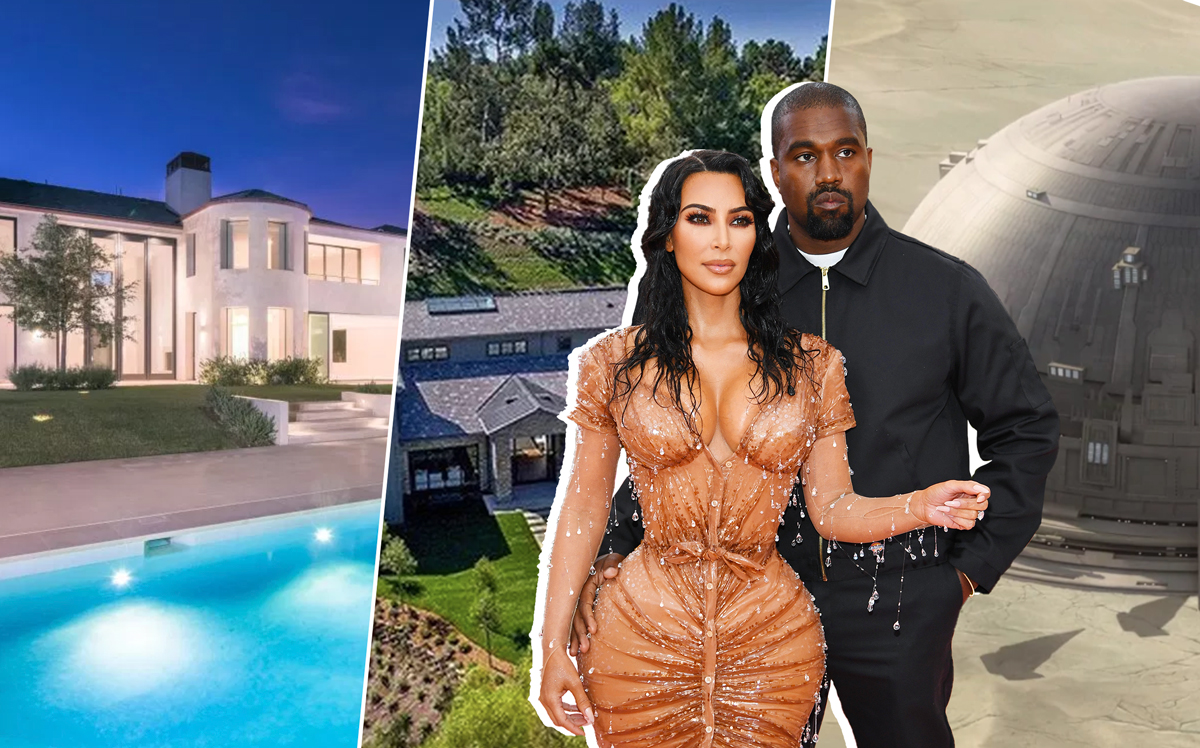Trending
Kanye West wants to be the “Henry Ford” of real estate. Here’s what he’s done so far
Kanye West and Kim Kardashian West have built a reputation for real estate savvy through their own investment

During an episode of “Keeping Up with the Kardashians” earlier this spring, Kanye West and Kim Kardashian West addressed the rapper’s intention to relocate the entire family to Chicago.
Kardashian West thought her husband had been kidding. “Any conversation I have is serious,” he replied.
If that’s true, then the wider real estate world should prepare itself. Though West’s plan for a community of affordable Star Wars-inspired houses in Los Angeles hit a snag last week, he and his wife have built a reputation for real estate savvy through their own personal investments — and designs.
In 2017, the couple sold their 9,000-square-foot mansion to Ukranian billionaire Marina Acton for $17.8 million — setting a record, at the time, for the most expensive sale in the Bel-Air Crest community. The pair paid $9 million for the property in 2013, and spent two years renovating the six-bedroom, eight-bathroom residence before moving in.
By 2018, the Kardashian-West clan had decamped to another property, purchased in 2014 for $20 million, in the gated Hidden Hills community. Photos West shared on Twitter that April prompted Kardashian-West to publicly tease him for breaking their rule to keep their space private before posting a tour of the property on her own channels. Featuring minimalist architecture and a monochromatic palette, the design includes a television that rises out of a concealed space in the floor and bathroom sinks with slits instead of bowls conceptualized by West, among other unique architectural choices. Kardashian West’s mother, Kris Jenner, later claimed — via Twitter — that the home’s value had reached $60 million.
Around the same time, West had publicly declared his intentions to build a real estate empire and delve into urban design — an announcement that proved divisive. During an interview with television and radio personality Charlemagne Tha God, West said he wanted to be “one of the biggest real estate developers of all time, what Howard Hughes was to aircrafts and Henry Ford was to cars… We’re going to develop cities.”
Later that month, he announced a plan to launch an architectural practice called Yeezy home with an aim to “make the world better.” Tackling that, in this case, would involve the construction of 50-foot dome-like structures in Calabasas, inspired by the aesthetics of Luke Skywalker’s home planet, Tatooine. West envisioned the design as having potential for affordable housing.
“I really do believe that the world can be saved through design, and everything needed to actually be architected … but we’re led by the least noble, the least dignified, the least tasteful, the dumbest, the most political,” he said during the interview.
CityLab staffer Brentin Mock didn’t doubt West’s ability to enter the field, but doubted his ability to actually execute projects that would meet the needs of actual people. Mock cautioned that the mogul would be “the most technocrat-est of technocrats, if not a dictator — and one who believes that his love for all people is all the evidence that’s needed for people to trust his development vision, which is a personality trait of the worst kind of developer.”
Around the same time, rumors — fed by West himself — began to circulate that West was contemplating a move to the Windy City (thus the cross-wire conversation with his wife on the show). But while evidence of a home in the city has yet to materialize, West did dip a toe into the commercial space with a million-dollar investment in the Avalon Regal Theater in February. The historical movie palace, purchased by entrepreneur Jerald Gary for $100,000 in 2014, has been empty for nearly a decade.
As for the domes: They were being constructed on a 300-acre plot of land owned by West in the San Fernando Valley. In August, Forbes published details about the structures, which West has said draw on “every period of man’s existence on earth” and will “break the barriers that separate classes … namely, the rich, the middle class and the poor.”
Reminiscent of “wooden spaceships” according to the reporter, they stand 50 feet high; West imagines they could be used to house the homeless. But while West has found great success thinking outside the box in many other endeavors, for now this one is on hold. Earlier this month, inspectors came to the work site and concluded that the project was missing the plans and building permits necessary to move forward. If West is truly serious about continuing to create prefabricated housing, this time he’ll have to hew to the rules.




